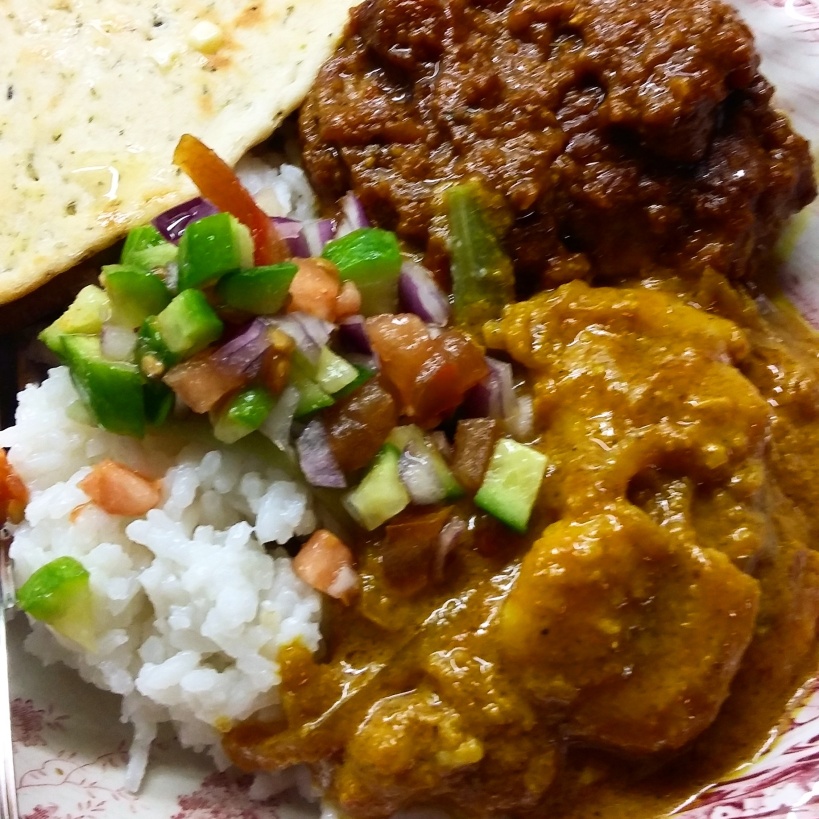After the Christmas period I find myself once more craving warm and spicy foods. You can’t keep a curry fan down, and I turned to my Rick Stein book, India, for inspiration. The author explains that the word Vindail refers to the fact that it contains vinegar, although I expect it dates back further to the Portuguese “vin d’alho “ which is the origin of the word Vindaloo and refers to the wine (which was then substituted for vinegar in Goan cuisine) and garlic used to make the dish.

The ingredients for the sauce are meant to serve 4 although I made the dish for 2 people. I played around with the quantities but have given details of the original recipe in brackets. The sauce is not too hot, but of course you can add extra chilli if you like, with a pleasing tang of vinegar which is tempered with the addition of a small amount of sugar.
INGREDIENTS (to serve 2 or 4)
- 2 tbsp vegetable oil
- 2cm piece of cinnamon stick
- 3 cloves (1 clove)
- 1 star anise
- 1 medium onion, chopped (2 medium onions)
- 5 cloves of chopped garlic (10 cloves)
- 1 tbsp ground cumin
- 2 tsp Kashmiri chilli powder (or use your usual hot chilli powder)
- ½ teaspoon ground fenugreek (toasted ground fenugreek)
- ½ teaspoon turmeric
- 1 teaspoon salt
- 200g chopped tinned tomatoes plus 1 medium fresh tomato, chopped (500g tomatoes roughly sliced)
- 2 pork fillets (1kg chicken thighs and drumsticks, on the bone, skinned)
- 1 tbsp white wine vinegar
- 1 teaspoon sugar
Heat the oil in a deep frying pan and add the cinnamon, cloves and star anise. Fry gently for a minute until fragrant then add the onions. Fry until golden brown but not burnt (about 10-15 minutes). Add the garlic and cumin and fry for a couple of minutes. I added a drop of water as it started to stick. Now add the rest of the spices, fry for a few seconds then add the tomatoes. Once they have started to soften and break down (about 5 minutes) add the meat, stir and cover.
The pork cooked quite quickly, about 10 minutes, so I removed it from the pan and kept it warm then continued to cook the sauce for another 30 minutes. If you’re using chicken, leave it in the sauce to continue cooking. When the sauce has reduced and thickened and the meat is cooked (if using chicken), add the vinegar and sugar and if you’ve used pork fillets or steaks, add them back into the sauce. Cook for a further 5 minutes and you’re ready to serve.

If you prefer a more traditional chicken curry, take a look at one of my favourite recipes.
















